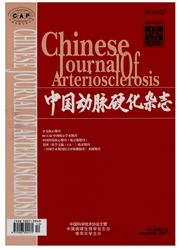

 中文摘要:
中文摘要:
ObjectiveTo 与冠的动脉 ectasia (CAE ) 在老病人调查发生,成像和临床的特征 .MethodsA 回顾的分析与 CAE 在病人上被进行经历了在 2006 年 1 月和 2012 年 12 月之间的冠的 angiography。根据年龄,注册病人被划分成二个组(老组,年龄 ≥;65 年;非老的组,年龄 <;65 年) 。临床的特征,成像特征和二个组的 5 年的幸存率是在老病人的 CAE 的 compared.ResultsThe 流行是 0.33% 。在老组的病人被发现有女性的显著地更高的比例(30.1% 对 10.1% , P <;0.001 ) ,三容器的疾病(60.5% 对 45.2% , P = 0.003 ) 并且局部性的 ectasia (55.0% 对 40.2% , P = 0.003 ) 。另外,身体团索引(20.90 ±;2.71 kg/m 2 对 22.31 ±;2.98 kg/m 2, P <;0.001 ) 并且当前的吸烟者的百分比(45.0% 对 64.6% , P <;0.001 ) 在老组是显著地更低的。累积幸存曲线与非老的组相比在老组在后续表明了减少的 5 年的累积幸存(88.0% 对 96.0% , P = 0.002 ) 。但是免费幸存率没能显示出二之间的重要差别的 5 年的事件组织(31.0% 对 35.0% , P = 0.311 ) 在老病人的 CAE 的 .ConclusionThe 流行是 0.33% ,它关于 CAE 病人的全部数字的 1/3。在之间有重要差别老并且有 CAE 的非老的病人以冠的动脉疾病冒险因素和冠的动脉 ectatic 特征。CAE 可能与增加的死亡风险被联系在老。
 英文摘要:
英文摘要:
Objective To investigate the incidence, imaging and clinical characteristics in elderly patients with coronary artery ectasia (CAE). Methods A retrospective analysis was conducted on patients with CAE who underwent coronary angiography between January 2006 and December 2012. According to age, the enrolled patients were divided into two groups (elderly group, age≥ 65 years; non-elderly group, age 〈 65 years). The clinical feature, imaging characteristics and the 5-year survival rate of the two groups were compared.Results The preva-lence of CAE in elderly patients was 0.33%. Patients in elderly group were found to have significantly higher proportion of female (30.1%vs. 10.1%,P〈 0.001), three-vessel disease (60.5%vs. 45.2%,P = 0.003) and localized ectasia (55.0%vs. 40.2%,P = 0.003). In addition, body mass index (20.90 ± 2.71 kg/m2vs. 22.31 ± 2.98 kg/m2,P 〈 0.001) and percentage of current smokers (45.0%vs. 64.6%,P 〈 0.001) were significantly lower in elderly group. Cumulative survival curves demonstrated reduced 5-year cumulative survival at the follow-up in the elderly group compared with the non-elderly group (88.0%vs. 96.0%,P = 0.002). But the 5-year event free survival rate failed to show a significant difference between the two groups (31.0%vs. 35.0%,P= 0.311).ConclusionThe prevalence of CAE in elderly patients was 0.33%, which was about 1/3 of the entire numbers of CAE patients. There were significant differences between the elderly and the non-elderly patients with CAE in terms of coronary artery disease risk factors and coronary artery ectatic characteristics. CAE might be asso-ciated with increased mortality risk in the elderly.
 同期刊论文项目
同期刊论文项目
 同项目期刊论文
同项目期刊论文
 期刊信息
期刊信息
